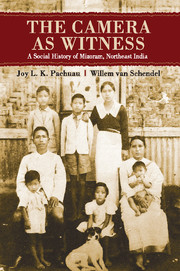Book contents
- Frontmatter
- Contents
- List of Figures
- List of Maps
- Acknowledgements
- I Becoming Mizo
- II Mizoram in the New India
- 11 The Long Goodbye
- 12 The Emergence of Popular Politics
- 13 Mizoram and the New Indian Order
- 14 Mizoram Comes to Delhi
- 15 The Search for Authenticity at Home
- 16 Mizo Style: Cowboys at Heart
- III Visions of Independence
- IV Mizo Modernities
- Copyrights and Sources
- Glossary
- Bibliography
- Index
12 - The Emergence of Popular Politics
from II - Mizoram in the New India
Published online by Cambridge University Press: 05 May 2015
- Frontmatter
- Contents
- List of Figures
- List of Maps
- Acknowledgements
- I Becoming Mizo
- II Mizoram in the New India
- 11 The Long Goodbye
- 12 The Emergence of Popular Politics
- 13 Mizoram and the New Indian Order
- 14 Mizoram Comes to Delhi
- 15 The Search for Authenticity at Home
- 16 Mizo Style: Cowboys at Heart
- III Visions of Independence
- IV Mizo Modernities
- Copyrights and Sources
- Glossary
- Bibliography
- Index
Summary
On 15 August 1947, India gained independence amidst celebrations, nationalist fervour, the installation of a new elite and bloody riots. In Mizoram, however, none of this happened. Here the new Indian flag did not flutter in the breeze, there were no public festivities and the communal frenzy that swept over many parts of India was completely missing.
For a moment, Mizoram seemed unaffected by the historic change. It was in limbo. A few days after independence, however, the details of the territorial partition of Pakistan and India were announced and it turned out that the international border between India and Pakistan ran along Mizoram's western boundary. Against expectations, the hills to the west, the Chittagong Hill Tracts, had been awarded to Pakistan. When Burma gained independence a few months later, Mizoram's southern and eastern boundary also turned into an international border.
Now Mizoram was almost completely surrounded by ‘foreign’ territories that had been part of a single colony only weeks ago. Its connection to the new republic of India was only to the north. And even here it was more tenuous than would appear if we look at today's map: to the northeast was Manipur and to the northwest Tripura. Neither of these areas became part of India in 1947. As princely states – which the British had ruled ‘indirectly’ – they became independent kingdoms that were given the choice later to join one of the two new republics of Pakistan and India. Map 12.1 shows how, overnight, Mizoram had become a territorial outlier of India, a bizarre geographical appendix of uncertain status surrounded by four foreign countries. The hill people were now divided between five countries: India, Burma, Manipur, Tripura and Pakistan. Both Tripura and Manipur would eventually accede to India (in 1949), and East Pakistan would become Bangladesh (1971), so today they live under three states: India, Burma and Bangladesh.
- Type
- Chapter
- Information
- The Camera as WitnessA Social History of Mizoram, Northeast India, pp. 245 - 252Publisher: Cambridge University PressPrint publication year: 2015

